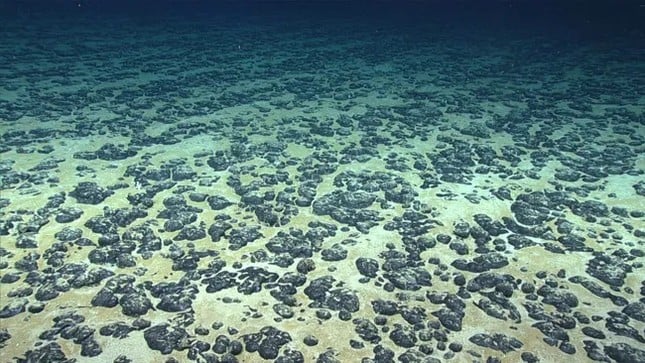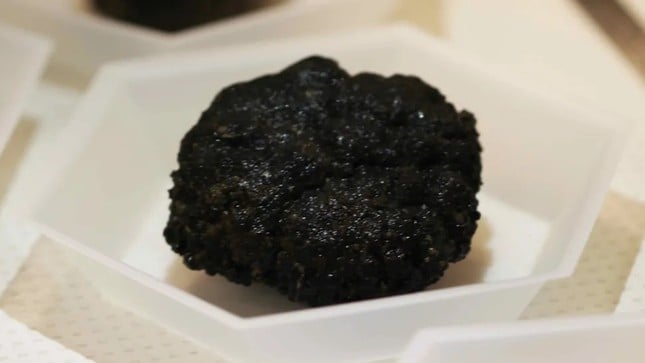TPO – For the first time in the world, scientists working at the Clarion-Clipperton Area in the North Pacific have discovered metal nodules on the seabed that produce their own oxygen, known as “black oxygen”.
 |
Polymetallic nodules are potato-sized lumps of iron and manganese oxide that also contain precious metals like cobalt and rare earth elements. (Photo: NOAA Office of Ocean Exploration and Research , Southeast U.S. Deep Sea Exploration) |
New research shows that potato-sized metal nodules scattered across the Pacific Ocean floor can produce oxygen in complete darkness and without any assistance from living organisms.
The discovery of deep-sea oxygen, dubbed “black oxygen,” is the first time scientists have observed oxygen being produced without the involvement of living organisms and challenges what we know about the emergence of life on Earth, researchers say.
“When we first got this data, we thought the sensors were faulty, as every study ever done in the deep sea had only seen oxygen being consumed, not produced,” said study lead author Andrew Sweetman, professor and head of the seabed ecology and biogeochemistry research group at the Scottish Association for Marine Science (SAMS).
But when the devices repeatedly displayed the same results, Sweetman and his colleagues knew they had found something groundbreaking and unthinkable.
 |
The polymetallic nodules were deposited on the seafloor millions of years ago and grow by about 2 mm every million years. (Photo: DeepCCZ Expedition) |
The results of the study, published in the journal Nature Geoscience, show that tiny metal nodules found in the Clarion-Clipperton Zone (CCZ) of the North Pacific Ocean produce oxygen through seawater electrolysis, in which seawater splits into oxygen and hydrogen when electrically charged. According to the study, this charge may come from differences in electrical potential that exist between metal ions inside the nodules, leading to a redistribution of electrons.
The discovery of black oxygen 4,000 meters below sea level, where no light can penetrate, challenges scientists' belief that Earth's oxygen is produced naturally only through photosynthesis. It raises new questions about the origin of life on Earth some 3.7 billion years ago.
According to Live Science
Source: https://tienphong.vn/lan-dau-tien-phat-hien-ra-oxy-den-duoi-bien-sau-post1657768.tpo





































































































Comment (0)